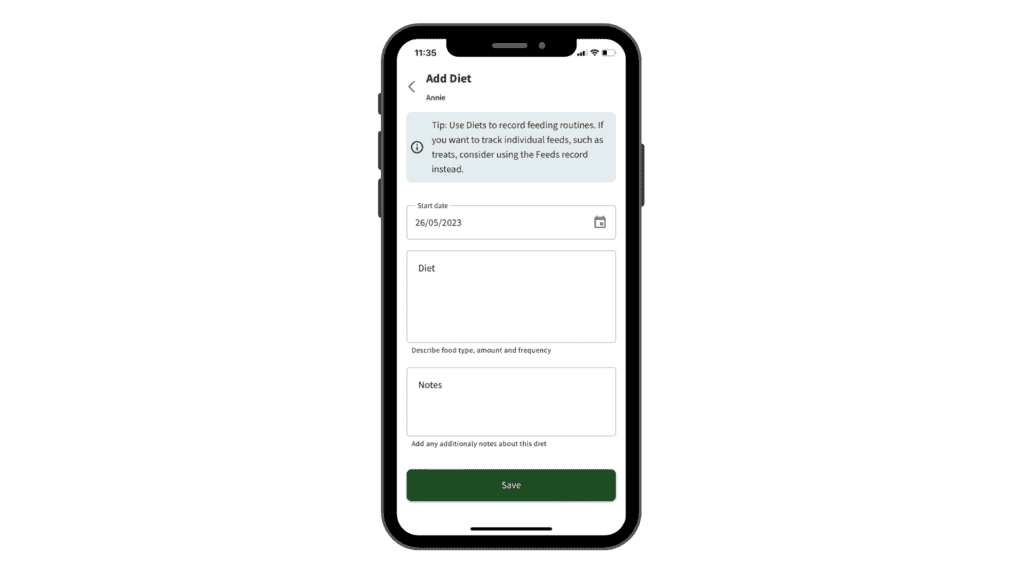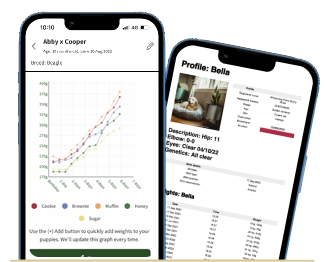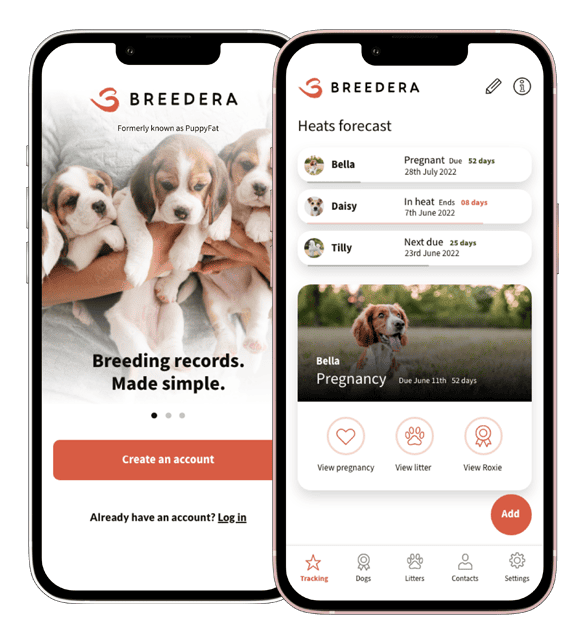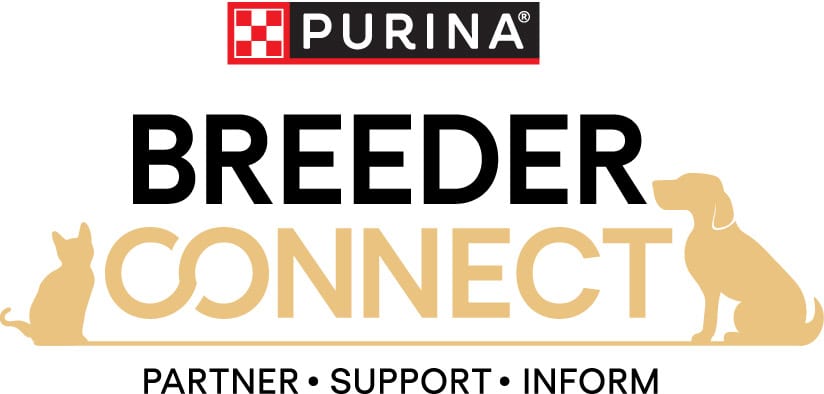Tracking your dog’s diet is essential for any responsible breeder as it helps your animals maintain a healthy weight, gives you invaluable insights into their nutrition, and can even alert you of any allergies.
In this article, we explore what exactly you should be tracking, the importance of tracking diets and give you some tips on saving time when logging diet records.
Why is tracking your dog’s diet important for dog breeders?
Establishing baseline health
Tracking your dog’s diet and feeds can help establish the baseline health of your dog, monitor their weight and Body Condition Score and give you a better insight into their nutrition over time.
Purina scientists developed and validated a 9-Point Body Condition Score (BCS) system for dogs and cats. The BCS system assesses external body fat and can help estimate an animal’s optimal body weight, regardless of breed or body size.
Optimal reproductive health
For breeders specifically, the health and weight of your bitch(es) impacts their reproductive health.
According to Dr Marty Greer at the American Kennel Club, “Everything a pregnant mother puts into her body has the potential to affect the development of her foetus”.
Identify allergies and sensitives
Logging everything your dog eats and monitoring their behaviour, stools and general health can help you quickly identify any allergies or sensitivities in their food. With a log of your dog’s diet to hand, you can easily share this with your vet so they can spot anything that could be causing an allergic reaction.
Ensuring healthy litters
A breeding dam’s diet plays a significant role in the development and health of their pups. By meticulously tracking her diet history, you can provide proper nutrition that supports the growth of healthy puppies.
Nutrient-rich diets contribute to strong immune systems, proper skeletal development, and robust overall health in the puppies. Understanding your dog’s dietary background allows you to make informed choices that positively impact the long-term health and vitality of their litters.

What to log when you’re tracking your dog’s diet:
In short, everything that your dog consumes. But, here’s a checklist so you don’t miss anything:
- The amount of all foods fed to your dog on a typical day – try to be as accurate as possible. For example, 1 can of wet food + 75g of dry food daily.
- Main meals – the brand, the flavour, form, the amount eaten, how its measured, frequency and how long your dog has been eating this particular food.
- Dental chews and treats – The brand, type of chew, amount, and frequency.
- Human food – We all know that sometimes our dogs eye up our dinners! Always note down the type of food and how much.
- Nutritional supplements – Brand type, supplement name. For example, toppers probiotics, glucosamine, and chondroitin.
- Medication – The type of medication, time it was taken, frequency, food it was administered with (if any).
- Toothpaste – The brand, flavour, frequency and how long your dog has been using it.
- Access to other food sources – Are there other pets in your house that the dog could be stealing food from? Young children who may share food with the dog?
How to save time when tracking your dog’s food
Writing down every single thing your dog eats – especially if you have multiple dogs and puppies to feed and look after – can be extremely time-consuming and tedious.
Designed specifically for busy breeders, Breedera allows you to track your dog’s diet with a few simple taps on your phone or tablet.
Create diet routines
If your dog eats the same main meals each day, you can easily create a regular diet routine in Breedera, noting down the brand, flavour, amount, frequency and how long your dog has been eating this food.
You could also do this for other regular routines, like toothpaste and nutritional supplements.

Add one-off treats
Meanwhile, one-off treats, like chews and biscuits (and maybe the occasional chunk of human food) can be added to your Feeds logs.
Log treatments and medication
Breedera also offers the ability to log medication separately from their everyday foods. You can easily log a treatment in just a few taps.

Disclaimer:
*The information provided in this article is for general informational purposes only and is not intended to be a substitute for professional veterinary advice, diagnosis, or treatment. The content shared here is based on thorough research, personal experiences and the collective knowledge of the dog breeding community.
While we strive to offer accurate and up-to-date information, the field of veterinary medicine is constantly evolving, and individual cases may vary. Always seek the advice of a qualified veterinarian with any questions you may have regarding your dog’s health or well-being.














By Courtney Farrow
Courtney supports Breedera with all our online content. Specialising in heart-led copywriting for purpose-driven brands, she is passionate about Breedera's mission to make responsible breeding practices easy and rewarding and champion more traceability and transparency in the pet industry.